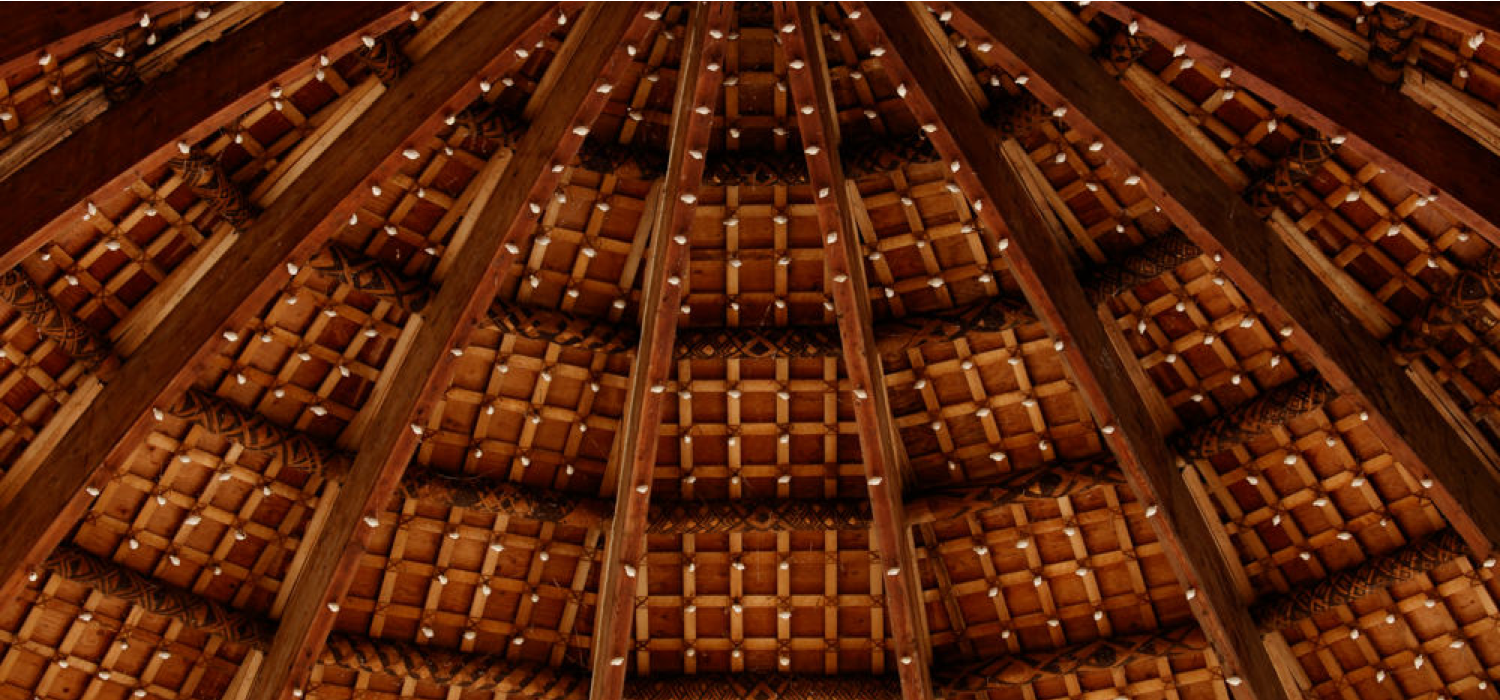Contribution to Cultural Heritage (CCH)
Tongan house design (cool in hot seasons)
Meeting House in Kiribati
Sand Drawings of Vanuatu
There is a clear link between cultural values of Pacific Island Countries (PICs) and the possibility of restoring dignity through practical actions. One important question to discuss is to look at the significance of the Pacific countries’ cultural heritage for future generations. How can we ensure that knowledge from PICs ancestors is carefully conserved during the current generation’s lifetime? At the closing of the fifty-ninth session of Tonga’s Parliament on September 4th, 1959, Her Majesty Queen Salote addressed the assembled lawmakers, saying “the customs of a people are its heritage and the possession of a complete knowledge of their customs will enable them to modify those customs to meet the demands of modern progress along lines most beneficial to their well-being.”More than 40 years later, the movement of the United Nations Educational, Scientific and Cultural Organization (UNESCO) towards recognizing the need to preserve cultural heritage was finally established in 2003. The first registration of intangible cultural heritage occurred in 2008, and as of the year 2016 there are a total of 429 heritages listed (UNESCO). From the PICs, so far only Tonga and Vanuatu managed to register one cultural identity each in 2008. Tonga highlighted its “Lakalaka” (dances and sung speeches) while Vanuatu showcased its tradition of “sand drawings.” Is that all?
There are more than 1200 languages within the region where oral knowledge has been passed down through many generations. What about the thousands of dances and arts that are currently performed, not mentioning those that are no longer practiced? The uniqueness of traditional lifestyles such as fishing and farming, including ritual festivals, are uncountable. Why is it difficult for PICs and developing countries to prioritize the conservation of cultural heritage? Obviously, there are other urgent short-term commitments and priorities to operate a government within each year's budget. When the government budget of PICs rely heavily on foreign aid, areas related to cultural heritage usually comes last on the government priority list and most of the time not considered. The outcome of continuing current prioritizations will lead to the disappearance of these irreplaceable cultural knowledge that has the potential to contribute to international dialogues and cultural diversities.
How significant are these world-heritage resources for future generations? How can we conserve these knowledge as a world heritage?
Prioritizing the moral value of Cultural Heritage would encourage the PICs to design development strategies that contribute to conserving their cultural heritage, including traditional knowledge, through activities geared towards mutual understanding. Redefinition of cultural heritage within each country as a development framework would lead to a mutual respect and understanding for differences. Countries would continue to evolve towards global prosperity while perceiving their cultural heritage as a contribution to enrich the world.
Possible spheres to re-articulate what Oceania can offer that the world needs.
How significant is our cultural heritage for future generations? How can we transform these knowledge from our living libraries (elders)?
- Registrations of Cultural Heritage:
- Tangibles
- Intangibles
- Languages - more than 1200 in the Pacific alone
- Performing Arts, festivals
- Music - singing and compositions etc.
- Knowledge - relationship, parenting, harmony with nature etc
- Lifestyle: also applies to Contribution to Humanity and Livelihood
- Traditional Farming - Organic
- Traditional Fishing - Skills
- Food Preparations & Preservations
- Traditional Designs:
- Houses - Suitable for global warming
- Fine arts - sculptures, weavings, drawings, etc.
What are the spheres in the SDGs that Oceania could contribute from their CCH?
Join us today and be part of the CCH Discussion!










